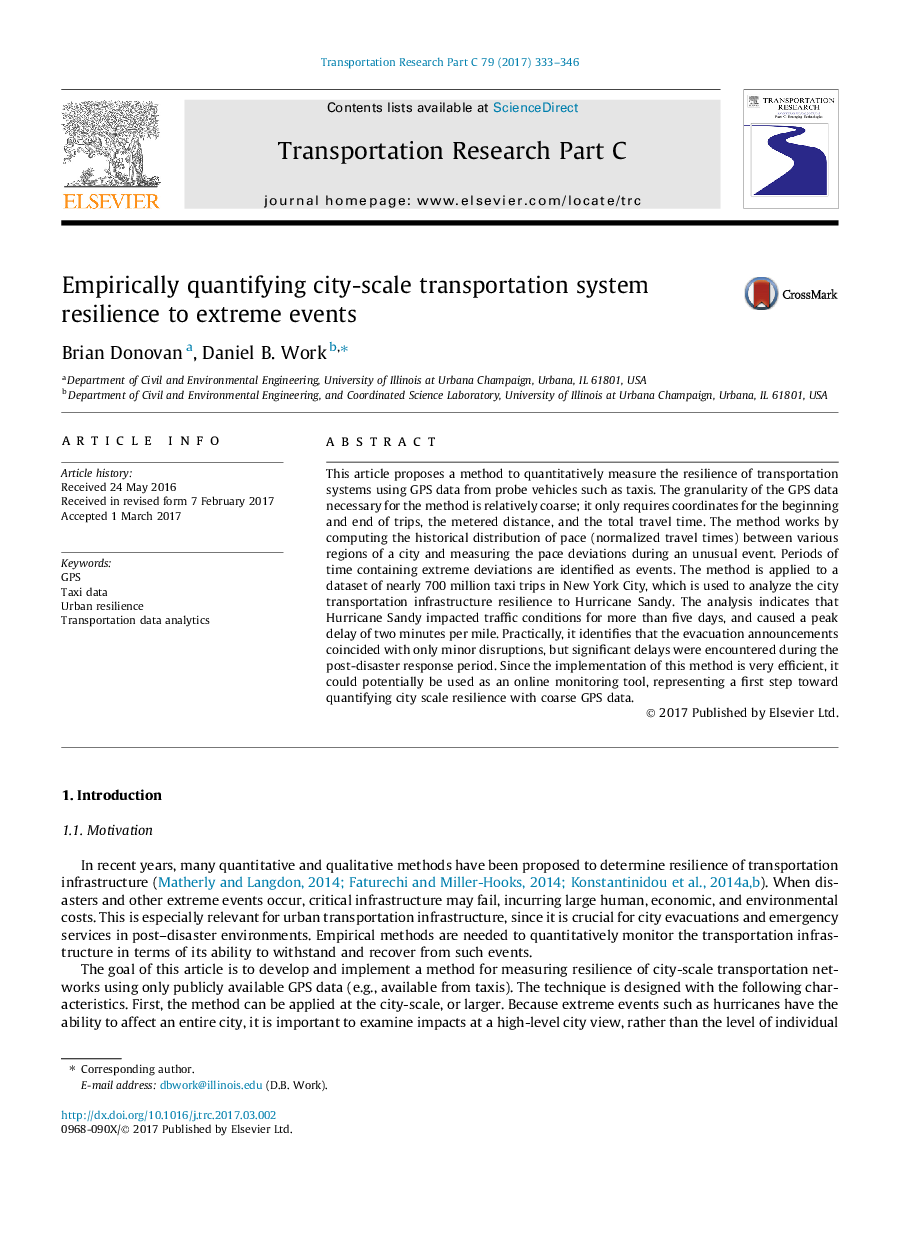| Article ID | Journal | Published Year | Pages | File Type |
|---|---|---|---|---|
| 4968569 | Transportation Research Part C: Emerging Technologies | 2017 | 14 Pages |
Abstract
This article proposes a method to quantitatively measure the resilience of transportation systems using GPS data from probe vehicles such as taxis. The granularity of the GPS data necessary for the method is relatively coarse; it only requires coordinates for the beginning and end of trips, the metered distance, and the total travel time. The method works by computing the historical distribution of pace (normalized travel times) between various regions of a city and measuring the pace deviations during an unusual event. Periods of time containing extreme deviations are identified as events. The method is applied to a dataset of nearly 700 million taxi trips in New York City, which is used to analyze the city transportation infrastructure resilience to Hurricane Sandy. The analysis indicates that Hurricane Sandy impacted traffic conditions for more than five days, and caused a peak delay of two minutes per mile. Practically, it identifies that the evacuation announcements coincided with only minor disruptions, but significant delays were encountered during the post-disaster response period. Since the implementation of this method is very efficient, it could potentially be used as an online monitoring tool, representing a first step toward quantifying city scale resilience with coarse GPS data.
Keywords
Related Topics
Physical Sciences and Engineering
Computer Science
Computer Science Applications
Authors
Brian Donovan, Daniel B. Work,
